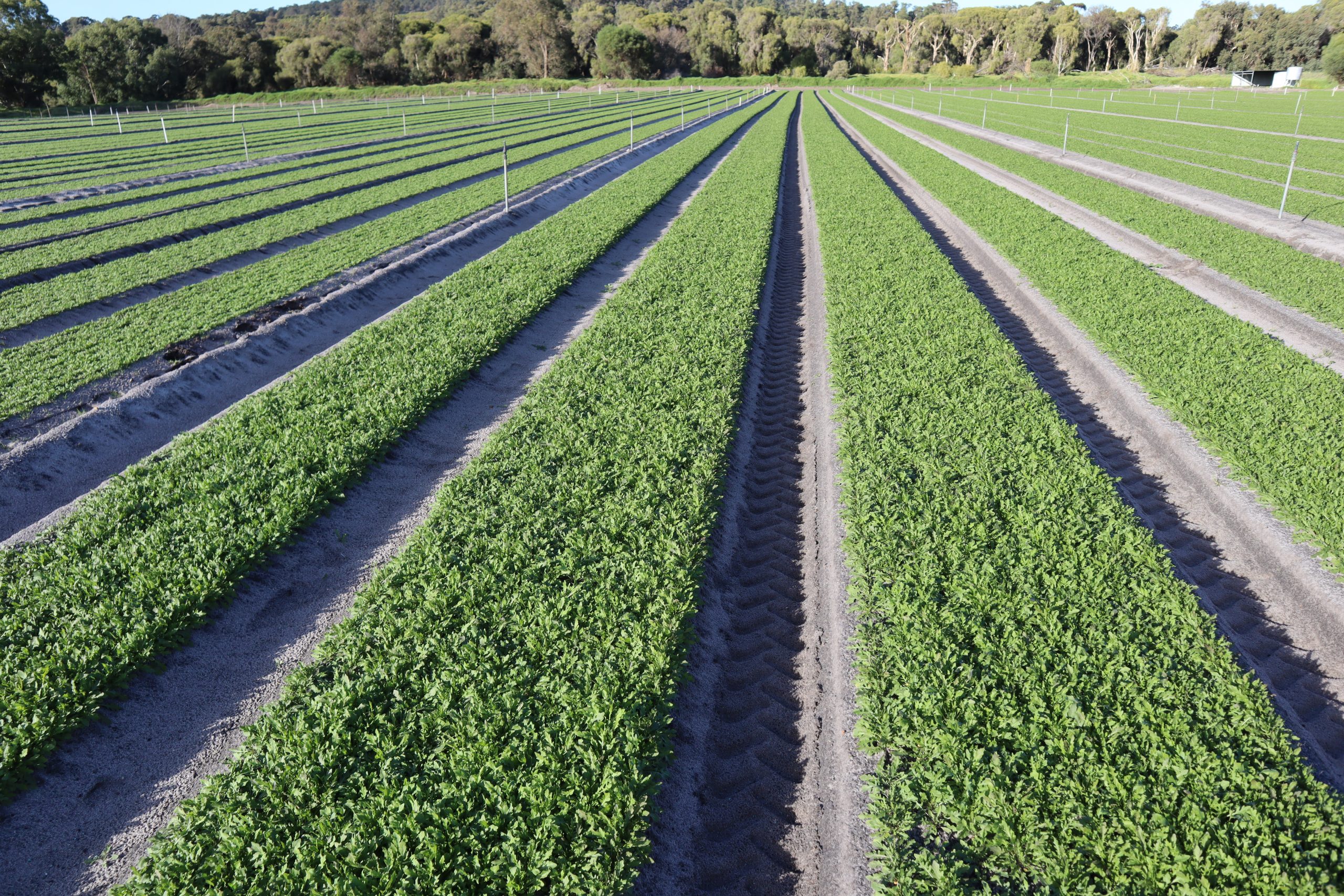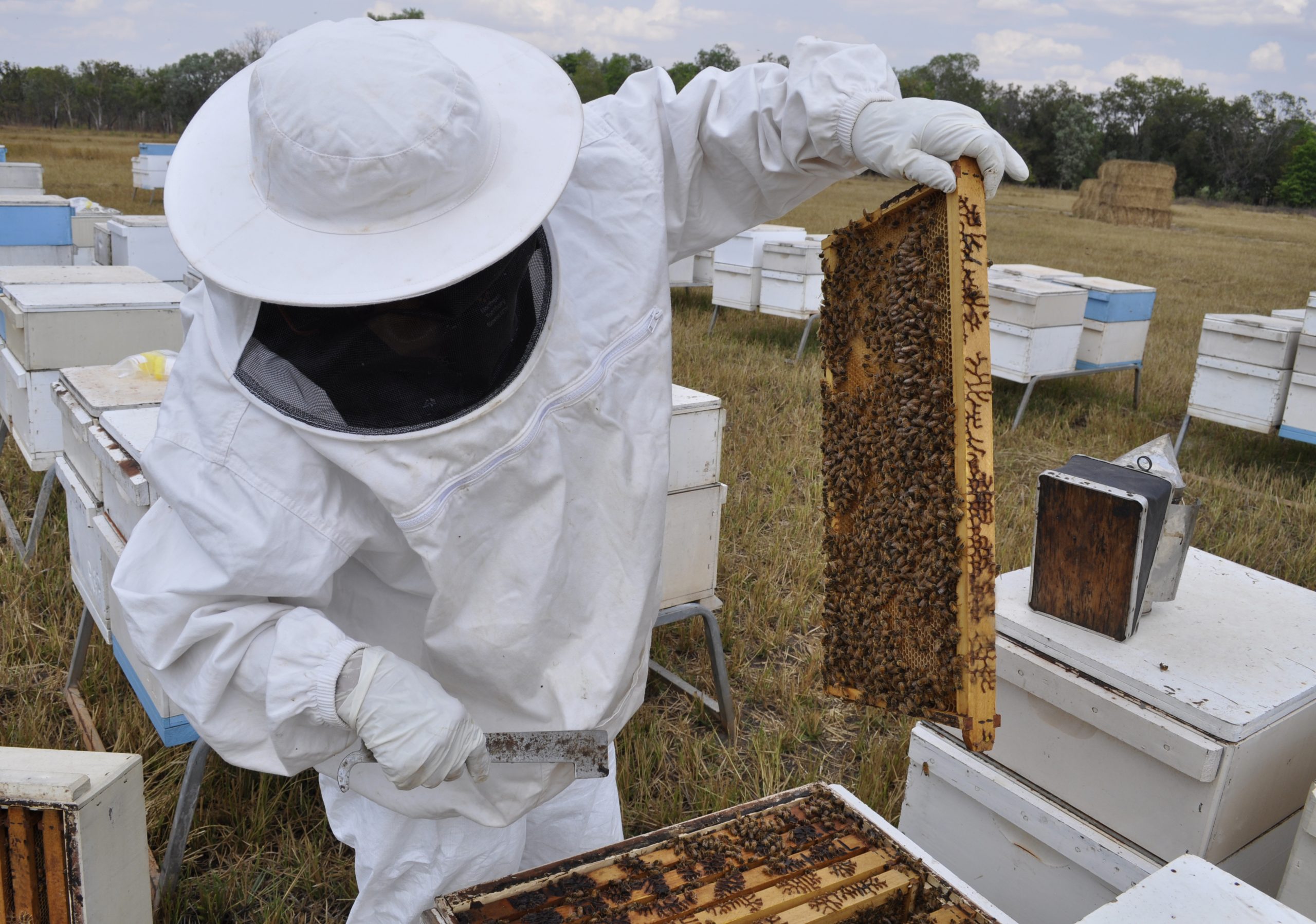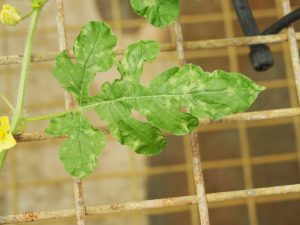
Seminar aiming to educate and inspire veg growers
13 May 2022
Weed management resources now available to veg growers
13 May 2022From 2019-2021, a project was undertaken that determined how honey bees introduce Cucumber green mottle mosaic virus (CGMMV) into healthy cucurbit plants, and then developed recommendations to manage the transmission of this virus by honey bees. Vegetables Australia has published excerpts from the project’s final report, collated by Project Lead Mary Finlay-Doney from the Northern Territory Government’s Department of Industry, Tourism and Trade, in collaboration with Hort Innovation and Melons Australia.
Cucumber green mottle mosaic virus (CGMMV) was first detected in Australia in 2014, and is now found in many states and territories. This plant virus is highly destructive and contagious. It affects all cucurbits and can lead to significant reductions in productivity and fruit quality. Exposure to CGMMV is a national concern for cucurbit producers and apiarists.
Cucurbit crops are almost 100 per cent pollinator dependent – they require insect pollination for successful fruit set and production. In Australia, honey bees are regularly used to provide managed pollination services to broad acre watermelon cropping. CGMMV is not known to affect bee health. The main concern is that if honey bees are exp osed to CGMMV and then moved significant distances within or between states, they may move this highly destructive plant virus to new locations.
osed to CGMMV and then moved significant distances within or between states, they may move this highly destructive plant virus to new locations.
Based on previous research conducted in Australia and elsewhere, we know that honey bees are able to move CGMMV from one flower to another and that the virus can persist in bee hives.
Bee hive products from the Northern Territory and Queensland have been tested for the presence of CGMMV both as fragments and as viable virus. This testing was undertaken by the project team from Improved management options for cucumber green mottle mosaic virus (VG15013), which was a strategic levy investment under the Hort Innovation Vegetable Fund.
All hive products (adult bees and brood, pollen, empty cells and propolis) contained CGMMV. However viable virus (capable of causing infection in plants) was only found in pollen, honey and adult bees.
The possibility that hives could carry a highly destructive plant virus with them and transmit it into new areas was a significant concern, both to melon producers (2019/20 industry value: $152 million) and the apiary industry (2018/19 industry value: $147 million). Understanding and managing the role of honey bees in CGMMV epidemiology was a strategic levy investment in the Hort Innovation Melon Fund, and it was established to determine if honey bees are able to transmit the viable virus from inside their hives into clean melon crops.
Honey bees and their role in CGMMV spread
The project’s results indicate that honey bees can spread CGMMV when pollinating infected and healthy crops at the same time.
However, the intensity of this transmission is dependent on the availability of the infected plants at the property. The risk (likelihood and proportion) of virus transmission increases the greater number of CGMMV-infected plants at the property. In this situation, honey bees are no different from any other mechanical vector that can spread CGMMV within a site.
Early detection and proper removal of CGMMV infected plants remains the most important biosecurity measure to manage CGMMV.
The evidence from this project is that the risk of foraging honey bees introducing CGMMV into new areas when their hives are moved is low.
The project team’s field transmission trials showed that the window for transmission of CGMMV by foraging bees from a hive that has been recently exposed to CGMMV positive plants is less than 24 hours.
A short window of possibility for transmission has been reported for other honey bee transmitted pathogens, although the length of the time for each specific pathogen varies (from hours to weeks).
Resting site hive trials showed that CGMMV was no longer detectable on honey bee bodies after one month. Therefore, it is recommended at least one month resting of CGMMV positive bee hives at a CGMMV free location to stop virus transmission of CGMMV by honey bees from positive hives.
Also, avoid bee hive management practices – such as hive splitting and honey extraction – while hives are present at a site of cucurbit production. This is because it could be possible to physically infect living cucurbits with viable CGMMV still contained in bee hive materials (such as wax frames or honey) when they are removed from the hive.
Therefore, the recommended management strategies to reduce CGMMV transmission via foraging bees and positive bee hives are:
- Proper and early removal of infected plant material from the property.
- At least one month break for hives that have had a known or presumed exposure to CGMMV positive plants before introducing them to another cucurbit crop.
- Avoid conducting hive management practices for suspected CGMMV positive hives on cucurbit producing properties.
Honey bees that have been exposed to CGMMV are not the most significant source of CGMMV. It is a plant virus that is most frequently introduced in seed/infected planting material and can be moved in soil, plant material or on contaminated equipment.
Apiary equipment (boxes, hive stands) and vehicles could carry CGMMV-infected soil/plant material and need to be managed. These management recommendations should be incorporated into on-farm biosecurity plans, apiary biosecurity plans and communicated to farm staff and visitors.
Open communication between cucurbit producers and apiarists is necessary for these management strategies to be effective. Please read the below boxout Managing on-farm biosecurity during managed pollination for more specific management practices to avoid CGMMV transmission via bees and positive bee hives.
Industry feedback
The results from this research do not necessitate a significant change in practice for melon growers or apiarists in most jurisdictions.
The Australian Honey Bee Industry Council (AHBIC) has prepared a special edition of its newsletter with the results of this project, which have been distributed to apiarists nationally.
AHBIC Chair Trevor Weatherhead said the results were reassuring for the managed pollination industry. However, he did highlight that there may be some challenges in the Burdekin region in north Queensland, where apiarists provide pollination services to melons and then move their hives directly on to pumpkins – both of which are cucurbit species.
This region has been identified as an important area for further education and extension of these project results in the future by the Australian Melon Association’s Biosecurity Officer, Joanna Embry.
The project results emphasise the importance of good biosecurity management, within the farm or apiary, and provide demonstrated evidence to underpin business decisions that producers affected by CGMMV are already making.
Fast facts: Cucumber green mottle mosaic virus
- Cucumber green mottle mosaic virus (CGMMV) is a Tobamovirus. This group of viruses is not commonly known to be insect transmitted.
- It was first detected in Australia in 2014.
- Now considered established in the Northern Territory and Western Australia, and under management in Queensland, South Australia and New South Wales.
- Causes leaf mottling and mosaic, yellowing and distortion.
- Affected fruit is unmarketable.
For more information, please click here. This has been produced by Area wide management of vegetable diseases: viruses and bacteria (VG16086).
Managing on-farm biosecurity during managed pollination
For growers:
- Manage your farm biosecurity. Contact your industry representative or local state agency for advice.
- Discuss the CGMMV status of your crop with your apiarist.
- Discuss the CGMMV status of any bee hives that you bring onto your property.
- Ensure hives used on your property have not been exposed to CGMMV within the past month.
- Ensure that hive materials (wax frames, honey) are not discarded in your cucurbit production areas.
For apiarists:
- CGMMV is not known to affect bee health or hive strength.
- Ensure you understand how bees and hives are exposed to CGMMV.
- Discuss the CGMMV status of the crops you pollinate with the grower.
- Ensure clear permanent marking and identification of hives (individually or in loads) and their components.
- Keep accurate and concise records for all apiary activities.
- If a hive has been exposed to CGMMV within the past month, the bees may be able to transfer CGMMV to other cucurbit plants when visiting flowers.
- If a hive has been exposed to CGMMV do not conduct hive maintenance on that hive in a cucurbit production area.
- Physically separate loads based on the sites they have worked, particularly if sites may have been CGMMV positive.
- Attend to hives suspected to contain CGMMV last in the workflow, and use separate hive tools and bee-keeping gear for these hives.
- Clean hive equipment between loads to ensure all wax and honey debris is removed, typically by using hot water or steam cleaning. Note that although these techniques will remove honey and wax – which may be carrying CGMMV – they have not been demonstrated to decontaminate CGMMV. If possible, have separate equipment for different loads.
Find out more
Please contact Brian Thistleton by emailing brian.thistleton@nt.gov.au.
The final report and factsheets for this project has been made available on the Hort Innovation website.
This project has been funded by Hort Innovation using the melon research and development levy and contributions from the Australian Government.
Project Number: VM18008
Cover image: Hive maintenance and sampling for CGMMV. Images courtesy of the Northern Territory Government’s Department of Industry, Tourism and Trade.




